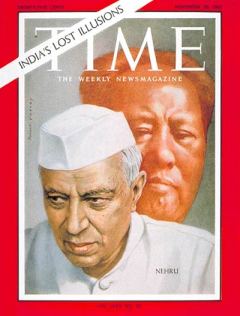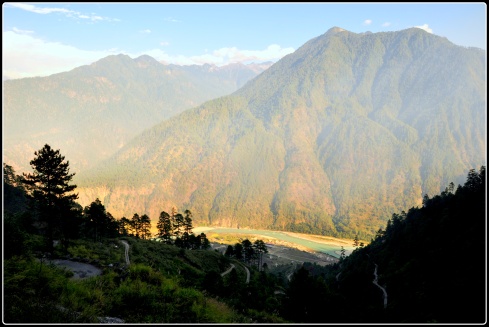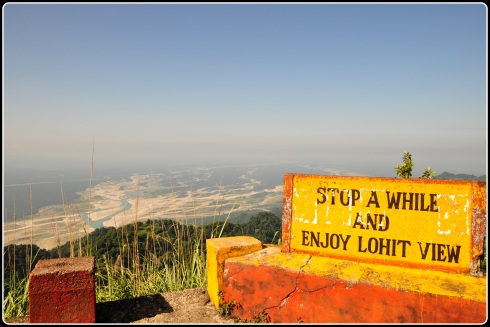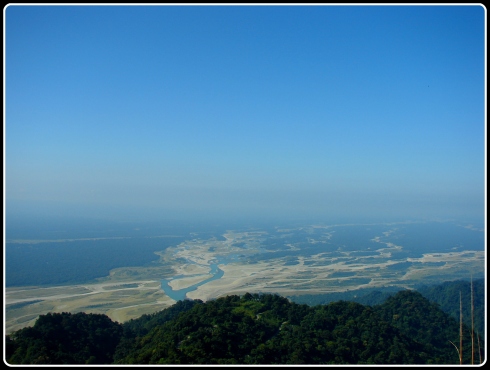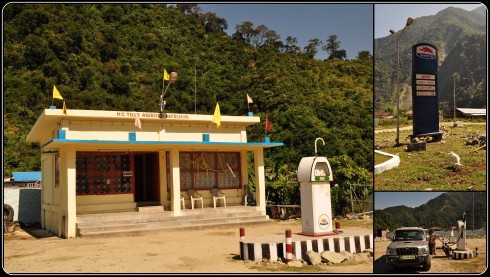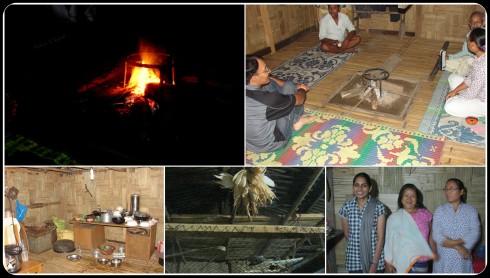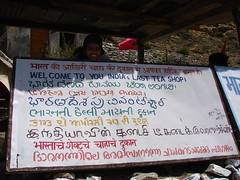This post is going to be different. I have decided to sit back and let someone else do the talking. My companion, my fellow traveller, and last but not the least, my better half is filling in for me this once. This post also has an emotional angle which might be better expressed by him.
So let me introduce to you my husband and my co-traveller, Rajesh.
A disclaimer. We have different writing styles. But we share the journey, the destination and the same spirit of travel and discovery. Here is his take on a nephew, a road and a pass – all of them special! So, over to him….
*** *** *** *** ***
We let the dust from the road shimmy around our feet and the silence wrap us from all around. In front of us stood the board we had traveled over 4000 km to see.
It read:

It was a sight we had seen without having been there. And it also wasn’t déjà vu. The scene had popped out at us in an album viewing session with someone who now has permanently found a place only in photos and memories.
Unlike the other posts in this blog, this one begins with an irresistible flashback of sorts; and I can’t help – figuratively speaking – bring to life (if only through words, which is what he loved most!) the person who I rank as one of my biggest personal losses – Arun Veembur, my nephew extraordinaire.

Arun Veembur
To sum up Arun in a few words is like trying to bring out the OED on an A4 sheet. But suffice to say, for now, that he was a brilliant student, an impossibly reckless but adorable human being, a fantastic writer, a traveler intrepid and a dreamer like no other. If you didn’t notice the tense in which I am forced to refer to him in, he is also no more.
Arun lost his life in a tragic mountain hiking accident in Dali, in Yunan Province, China. Out on a solo trek, despite being a trained mountaineer, he lost his way, his footing and his life on the rocky outcrop of the unforgivably treacherous Cangshan mountains.

The Cangshan Mountains
Just how this brilliant young man, hailing from Kerala and born and raised in Bangalore, came to live and die in China has something to do with the Pangsau Pass. More than the pass itself, the object of Arun’s infatuation was a super-strip of vintage tar laid during the World War-II days by the Allied forces, christened the Ledo Road, later also immortalized as the Stilwell Road.
The Stilwell Road, named after the US General Joe ‘Vinegar’ Stilwell, was Arun’s muse and his dream project for the last five years of his 28 year old life. To travel it and write a book on it became his mission unto the very last.

General Joseph Stilwell (March 19, 1883 – October 12, 1946)
Starting from Ledo, in Assam’s eastern most flanks, the road seems to have from thereon a mind of its own. Snaking through Jairampur, in Arunachal, and further down past Nampong, the last village on the Indian side, it lumbers on through the thick jungles bordering Burma. (Though renamed as Myanmar, in line with the spirit of the road and its legend, I have liberally used the country’s older name in many places in this post. There is something mystical, almost magical that seems to ring with Burma and things Burmese!)
Beyond the border, it surfaces up at Pangsau village – the first on the other side – and continues onwards in its undulating journey up and down the mountains and entering China to further soldier on till Kunming. That is a journey of no less than 1736 km. Meant to be the lifeline to transport men and arms to help the Allied forces battle the Japs, the road was built at great human and financial cost over some of the most impossible terrains in under two years. The unsung heroes who helped build it were a staggering 40,000 plus – Britishers, Americans, Indians, Burmese and those from nearly every nation that were part of or stood with the Allied forces contributed unremittingly to the cause.

The men, the machines and the animals on the road
It is famously retold that, during an air sortee over the mountains one monsoon during the war, Lord Mountbatten enquired the name of the river he thought he saw down below in the Hukawng Valley. No, he was told, that was no river. That was, in fact, the Ledo Road. And just how tough the Pangsau leg of the road is, reflects in the name they gave the place – Hell’s Pass.

Aerial view of Stilwell Road
It must have been stuff like that which must have inspired Arun. For someone like him, it was also not difficult to inspire others. Let me hasten to clarify that ours was not to try and attempt a crossing of the Stilwell Road. At best, our visit to Pangsau Pass and a drive down the iconic road was a pilgrimage – an undying tribute to someone for whom the road meant a lot, his life.
We flagged ourselves off on the day after Dussehra and our starting point, Tinsukia, and the whole of Assam was at her festive cheeriest. Despite the permanent smile he wore, we suspect that Das – who is fondly called Dasda by anyone who he has driven around the North East – was not entirely mirroring that feeling…what with having to be on duty after a night out at a pandal. But to his credit, it soon became clear as to why he is so regarded so highly – both as a driver and a travel companion.
Our stopover at Digboi was followed by a drive through the towns of Ledo and Lekhapani till we got to the point that formally announced the beginning of the Stilwell Road.

The Stilwell Road begins here
This was where Arun had got to about 5 years ago and told us about the goosebumps he had felt. At around noon on the 6th of October, 2011, we were to feel the same. We were 12 km away from Jagun and 24 kms from Jairampur, the last town in Assam and the first in Arunachal, respectively.

Stilwell Road Map
We were handed over our Inner Line Permits at the Jairampur checkpost by none other Mr. Arif Siddiqui, an accomplished photographer and the man behind www.amazingarunachal.com, an excellent resource on Arunachal tourism. Mr. Phupla Singpho, our friend at Miao and who runs his own NGO promoting tourism in Namdapha, had helped us with these permits and, of course, our Namdapha visit later in the trip. Our documents found to be in order, we felt another ray of current pass through us as we stepped foot in Arunachal for the first time!

Entering Arunachal Pradesh
Lunch was at a smallish restaurant – more dhaba – and further on we passed the Assam Rifles cantonment.
Our next stop was at the Vivekananda Kendra school where we had a wonderful meeting with the charming principal, Dubeyji and the administrator, Ramachandranji.

Vivekananda Kendra at Jairampur
One of the earliest in a pioneering chain of educational institutions in Arunachal, we saw up close the serene premises of VKV, Jairampur and walked around the classrooms, the boarding dormitories and met up with many of the students there.
Continuing on the Stilwell Road, we were now headed for the World War II cemetery. About 7 kms further down from Jairampur, we were driving slowly lest we should miss it in the thick overgrowth.

Entrance of the World War II Cemetery
But we were pleasantly surprised to see that it had now been bestowed some respect and had a prominent entry gate, making it hard to miss on your left.

Inside the cemetery
We spent some time among unknown gravestones and randomly meandering paths. It was somewhat eerie with the silence from the remoteness of the place and the fact that we were the only two living amidst the many departed and underground. After spending an hour or so with the martyrs, spotting a few butterflies and clicking a few photos, we left for Nampong, the easternmost Indian habitation on the Stilwell Road.

Nampong Inspection Bungalow
It was getting on dark and the road was, by then, taking a turn for the worse. Eventually, after being stopped briefly at an army checkpost, we drove into Nampong even as the sun was all but down. We were booked into the Nampong IB which was a little way above the market place and just before the checkpost that screens movement onwards to Pangsau Pass and Pangsau village.

Inside the Inspection Bungalow
The IB itself was a tidy arrangement, with an old wing and a new. There was ample parking space and the whole premises overlooked Nampong town, the surrounding mountain range and a brilliant sunset. We walked into the strains of music wafting about and were told that there was a music band that had drove in all the way from Guwahati to play in the Pooja pandal that was set up in town. And, post dinner, we settled down to some seriously elevated balcony seats, in the lawns of the IB, and watched and heard the band play to an appreciative crowd down below.

At the Checkpost - Pangsau Pass 12 km to go
We were up early morning and found Dasda giving his car a thorough wash. Packed, we were ready to head out to Pangsau Pass and be back before noon. Our chat with the IB staff, the previous night, had prepared us for some rather uninspiring news. We would not be able to cross over at the border and would have to miss the Lake of No Return and Pangsau village. Visitors from only either one of the nationalities could cross the border on a given day. It was a Friday and Fridays were Burma Day – which meant only Burmese villagers could cross over. Indians could go over only on the 10th, 20th and 30th of each month. If it weren’t a Friday, we could still have worked out some arrangement. Guess we would have to return to Nampong during one of the Pangsau Pass winter festivals – usually held in December – some other year.

On the road
After a brief stop at the checkpost outside the IB, we were flagged off. While we were waiting, we saw the first batch of Burmese villagers, with their baskets, walking up. Some were a little wary while others looked away but what caught our attention was they were nearly all women and children, hardly any of the menfolk.
We drove on through absolute wilderness. Wooded slopes dotted the hills around and the dust rose menacingly from the under construction road. In places, Joe’s road was as unmanageable as the Japs had been during those days. Dasda just took it all in his stride even as he kept up an amiable commentary on the region and its people.
All throughout, we noticed more but small batches of villagers walking in, chatting and giggling among themselves, unaware of clicking cameras from passing vehicles! Talking of passing vehicles, there were actually none other than ours. Except for a run down, open backed van that plied up and down and made a good fast buck out of the hapless villagers, saddled with their purchases on the way back. The going rate, Dasda added, was Rs. 100 per person for a ride.
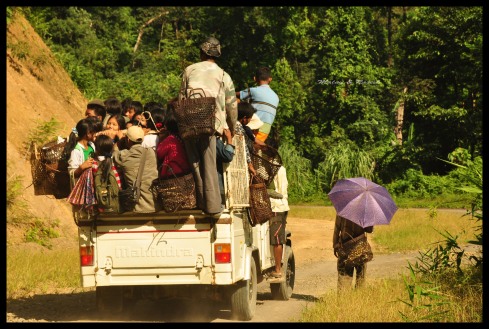
Taking a ride
We noticed something else. As a kind of travel insurance, the women had smeared their faces with some paste; apparently, this was to de-beautify themselves…strangely, leaving home is not always about looking good.

The old road and the new road
At one place, the road split into two. One of them, the more decrepit, was the old Stilwell Road while another, newer branch had carved its own modern day identity.

Indian Army screening the Pangsau villagers
We must have travelled about 12 km when we spotted a motley congregation ahead. We were at the border checkpost and the Indian Army was screening the Pangsau villagers. Sure enough, there were the green uniformed Indian guards, some of whom were busy checking documents. The large majority of the visitors just squatted and hung around all over, waiting for their one day permit that meant a week long stock of goods ranging from salt to clothes, bicycles to batteries and, yes, booze!

The mobikes
Over to a corner by the roadside, there were a dozen or so rundown mobikes without character or number plates, dumped to one side. These, we learnt, belonged to some of the more ‘affluent’ villagers who had, at least, saved on trudging the distance from their village to the border.
There were about fifity odd of the villagers and about half a dozen soldiers eyeing us. Dasda did the honors by introducing us to a senior Army man who promptly arranged for one of his men to escort us till the official border. Dasda chose to stay back and we set off with our new friend who seemed to carry his full rifle and a half smile with equal ease.

Being escorted to the border
With a shyness that didn’t quite gel in with his profile, he opened up with a little conversational support from me. Our escort, deferential but smart, was Baithye from Manipur and was currently posted to this outpost. There were not many Indian tourists, he told us, who made this journey. Of course, there were the villagers from Nampong and the crowds that thronged during the Pangsau Pass winter festival. But, I realized, it was only the oddball Stilwell enthusiast who dropped in and that wasn’t a number to worry the Indian Army much!

Pangsau Pass - Now and Then
We had turned a corner and were out of sight with the horde we had left behind. And, presently, we spotted the board I began this post with. We were at Pangsau Pass!

Teaching the shooter how to shoot!!
It was impossible not to freeze the moment and save it for posterity. We gladly let ourselves be shot by a soldier. Of course, he had tucked his rifle aside and gingerly felt his fingers around my D90 and fired the first round. I requested him to share the frame with me while Malini played soldier.

The sharp shooters??
We were now at the spot which, the board above us said, was the Indo-Burmese border. The checkpost of the Myanmar army was still a few hundred metres away, beyond another bend in the road. In the absence of a proper permit, reaching the Burmese checkpost was a no-no. We did, however, walk a few metres further on before turning back.
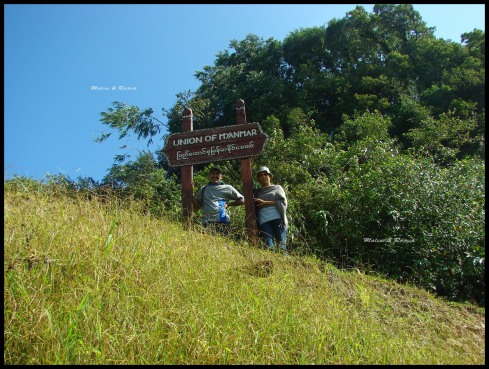
Talking India Looking Myanmar
Burma had just been a few strides away. Two kilometers across the checkpost lay the village of Pangsau and not too far away the mysterious, almost mythical, Lake of No Return. This waterbody gets its somewhat intriguing name from a piece of world war folklore that likens it to the Bermuda Triangle. It is said that, during WWII, an unverified number of Allied aircraft that flew over the lake had either crashed into it or simply disappeared. Adding to the mystery are also reports of soldiers, including those working on the Stilwell Road, having stepped into the lake and losing their lives. In fact, the Lake of No Return figured prominently in the joint scheme mooted by the Indian and Myanmar governments to promote tourism in the region. For now it had, tragically for us, become the Lake of No Entry!

Lake of No Return (Photo taken by Mr Arif Siddique, amazingarunachal.com)
Back at the Indian checkpost, we bid our new Manipuri friend goodbye and drove back. We passed more villagers – both on foot and cramped into the open vans – and wondered if there was any wonder that they ever felt for the road that had drawn us like a magnet all the way.

Shopping at Nampong market
As we drove back into the IB, we noticed a trickle of villagers leave the road, skirt the edge of the IB premises and take a shortcut down to the market below, saving them a couple of kilometers had they taken the road. For us, this was a once in a lifetime visit down Arun’s road. For them, the weekly hike was all about getting food, and other essentials, on the table back home.
Breakfast over, we were driving out of Nampong, headed for Miao for the Namdapha leg of our trip. As we passed the marketplace, Dasda slowed down to show us groups of Burmese villagers busily shopping around. They were huddling around hawkers, queuing up for liquor, flitting from one shop to the other…no one was a wanton tourist. There seemed a definite purpose to their long, painful international hike they made early morning.
Driving down the Stilwell Road for one last time (at least in this visit), we remembered Arun. Twice he had reached Nampong and turned back…only to come back and go the whole hog down the road that meant everything to him. He too had stayed at the Nampong IB, clicked himself to posterity at the sign board at Pangsau, went further down past the village and onwards to Myitkyina in Burma to reach Kunming in China.

Arun at Pangsau Pass in 2006
But his journey was still only half done. His travels on the road was just half his mission. The other half was the book he so wanted to write. All we have today, as Arun’s dream, are some photographs and a few opening chapters that he left behind. Going by that alone, it was clear that it would have had all the purpose that the Stilwell Road was meant to have. But, as with the road itself, all that we are left with is the beguiling aura, the undying charisma that Arun’s book holds in eternal promise.

Arun - The Intrepid Traveller














































